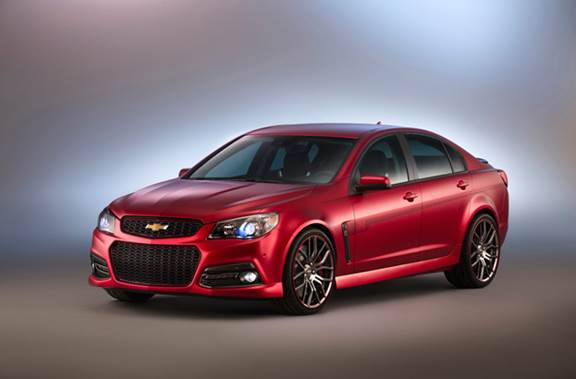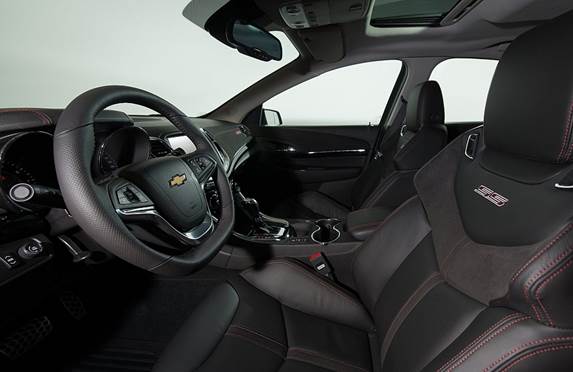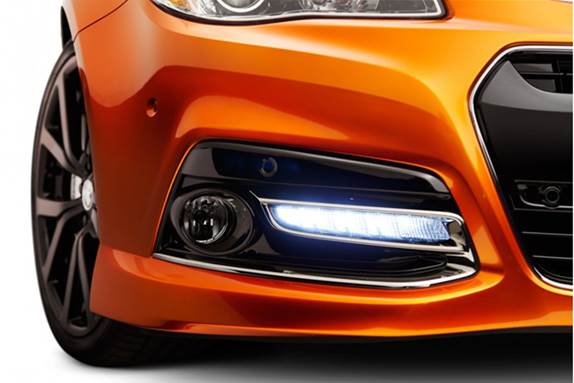Though the SS has international ties, make no mistake: it is a product of the good OL’ us of a
Here’s a car builds and largely developed in Australia but tuned on the Nürburgring for a European finish. Its engine – the most iconic of American engines – is assembled in Silao, Mexico. Its NASCAR namesake competes in the most American of auto-racing series, yet its dynamics and balance pleased a top-tier sports-car racer after a rigorous road-course shakedown.

The 2014 Chevrolet SS is the first car to take “SS” as a model name rather than a trim designation, and the first rear-drive Chevy sedan available to the public in 18 years. It’s a throwback and a guidepost to where the automotive world is headed. The SS – for Super Sport – takes classic overhead valve V8 rear-drive fundamentals and leverages them with engineering resources on three continents. It will please the European performance-sedan palate or at least surprise anyone who thinks Chevy “performance” sedans are flaccid vessels for huge engines. For long-time automobile enthusiasts, the SS is full of improbabilities.
Yes, the billion or so bucks spent developing this car will be amortized by its corporate sibling, the Holden VF Commodore. Its immediate predecessor, the VE Commodore, was Australia’s best-selling car for 15 straight years. The SS will be a nub on the bar chart of GM’s North American sales, but if this is what apple pie tastes like circa 2013, we’ll take seconds.
“We knew from day one that we’d build a Chevy SS from this platform, and we wanted to demonstrate what Chevrolet is capable of,” says SS chief engineer Dave Leone. “This is not a high-volume car in terms of its priorities and capability, but I think we hit the nail on the head.”

The SS’s big draw is Chevy’s LS3 V8. Better known as the C6 Corvette’s base engine, this 6.2-liter Gen IV small block isn’t offered in any Commodore. Peak horsepower is 415 and torque is 415 lb-ft, down 15 hp and 9 lb-ft from the 2013 C6 thanks largely to intake and exhaust paths. The transmission is GM’s 6L80 six-speed automatic – also developed for the C6 and installed in the SS with the same TapShift sport electronics and identical ratios. A limited-slip rear end comes standard with a 3.27 final drive ratio.
The suspension isn’t too fancy, just fundamentally sound: MacPherson struts in front with dual lower links and an independent multilink arrangement rear with coil-over shocks and three lateral ball joints per side.
Compliance is managed au naturel, with progressive-rate shocks and springs rather than GM’s adaptive Magnetic Ride Control. A range of aluminum suspension bits helps keep the SS’s center of gravity low and weight balanced 52 percent front, 48 percent rear.

The steering rack is mounted forward of the front-wheel centers and boosted by a rack-mounted electric motor, connected with a belt. The belt adds an insulating element, allowing more mechanical feedback from the rack and defined by back-driven resistance on the steering wheel.
It’s coincidence that the SS’s length and wheelbase match the new Cadillac CTS. The CTS starts with GM’s Alpha platform shared with the compact Cadillac ATS and built in Lansing, Mich. The SS starts with the Zeta platform; in its previous iteration, it provided the foundation for the Camaro and Pontiac G8.